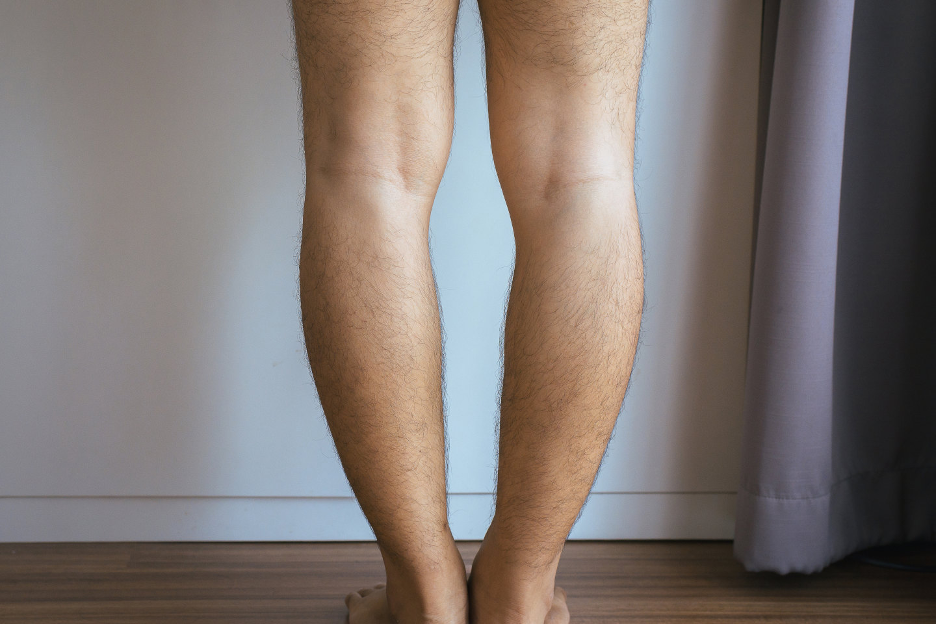
What are Bow Legs and Can They Be Corrected?
Perhaps you noticed a visible gap between your children’s knees when they stand up straight with both feet together. This can be a sign of bow legs or genu varum, a medical condition common but not only limited in young children where the legs curve outward and form an “O shape”, and the knees remain apart even when the feet are close together.
How are Bow Legs Diagnosed?
While bow legs result in an awkward gait, it generally doesn’t cause an individual pain. The condition also typically resolves on its own by the time a child reaches the age of 3-4. However, seeking treatment at a physiotherapy clinic in Singapore is advised if the condition persists beyond this age and is accompanied by symptoms that include:
- Pain in the knees, hips or ankle that is not due to injury.
- Limitation in range of movement especially in the lower limb joints
- The bowing of legs at different angles.
- Affected biomechanics of walking/having difficulties with walking or running.
- Instability in the knees.
Why Should Bow Legs Be Corrected?
Beyond just affecting one’s physical appearance, correcting bow legs might be a way out in reducing the discomfort in the joints and to maintain the joints health. This is because the uneven spacing between the legs puts undue strain on the lateral collateral ligaments that limit excessive outward movement to maintain the knee’s stability. The inward compression consequently causes discomfort and may even accelerate the degradation of the medial meniscus—the cartilage that acts as a cushion within the knee joint between the thigh bone and shinbone.
As a child grows into an adult, the excessive pressure in this area may also lead to a meniscus tear or heighten the individual’s risk of medial joint arthritis, reducing his or her mobility and quality of life. But how should one correct bow legs?
How to Correct Bow Legs in Children and Adults

1. Physiotherapy
One option is through the help of physiotherapy. In individuals with bow legs, the outward tilt of the shinbone at the knee occurs even as the thigh bone remains straight. This alignment leads to tightened adductor muscles along the inner thigh and weakened abductor muscles on the outer thigh. Physiotherapy addresses this through an approach that concentrates on reinforcing the weakened abductor muscles, loosening the tight adductors, and enhancing the overall balance and alignment of the legs.
i. Stretching
When a child has bow legs, the body will try to compensate for the lack of muscle strength, which can contribute to additional muscle tension. As such, your chosen physiotherapist will typically prescribe stretching exercises to stretch the muscles that have become stiff because of bow legs or o shaped legs. These include the adductors on the inner thigh, such as the adductor longus, adductor magnus, and adductor brevis, which draw the leg inward. In doing so, physiotherapy helps alleviate muscle tightness, enhance flexibility, and encourage knee alignment.
That said, stretching alone may not fully overcome muscle weakness, and this is where the second part of the physiotherapy treatment comes into play.
ii. Strengthening
Children with bow legs typically have underdeveloped muscles like the gluteus medius and tensor fasciae latae, which are crucial for pulling the leg outward and keeping the knees properly aligned. Therefore, exercises aimed at strengthening these muscles will also be prescribed.
iii. Dry Needling
For knee, arthritis and hip pain relief as well as the restoration of joint mobility, the physiotherapy session may also involve dry needling. In dry needle therapy, the physiotherapist will use extremely thin needles to alleviate muscle tension and pain at different levels.
The insertion of these needles prompts the muscle to relax around specific, painful spots known as trigger points found within tight muscle fibres. This relaxation helps to diminish muscle constriction, which can lead to a substantial decrease or even elimination of pain while enhancing the muscle or joint function.
Besides this, dry needling boosts blood circulation and oxygen delivery to the inflamed areas, assisting in removing lactic acid buildup. It also prompts the body to release natural pain relievers like endorphins and cortisol, thus reducing inflammation and expediting recovery.
iv. Shockwave Therapy
For individuals with a fear of needles, shockwave treatment is another viable alternative for addressing pain and muscle strains resulting from bow legs. How this works is that the physiotherapist will use a device to deliver shockwaves that penetrate the skin to disperse into the damaged tissue in a radial pattern. This action simulates an inflammatory response within the tissue, which enhances blood flow to the area in the body and triggers the body’s natural healing processes.
v. Custom Orthotics
As a final step in the physiotherapy intervention, the physiotherapist may also recommend custom-made shoe inserts to rectify bow legs and prevent subsequent complications.
People Also Read: Total Knee Replacement: All You Need to Know
Surgical Interventions
While non-surgical physiotherapy treatments are typically recommended, there may be instances when non-invasive treatments cannot address bow legs, such as when the individual has reached full growth. In such cases, surgical interventions may be required, and these include:
- Osteotomy: A surgical procedure on the bone employed to realign or straighten the leg.
- Limb-Lengthening Surgery: This treatment is typically performed to correct uneven leg lengths.
Tailored Approach for Bow Legs Correction
Ultimately, each case of bow legs is unique. Determining the ideal treatment for successful correction and rehabilitation requires fully assessing the individual’s condition and customising a treatment plan. As such, it is recommended that you consult a physiotherapy clinic in Singapore on how to manage the condition in your child or adult family member. For more information, reach out to Rapid Physiocare today.



